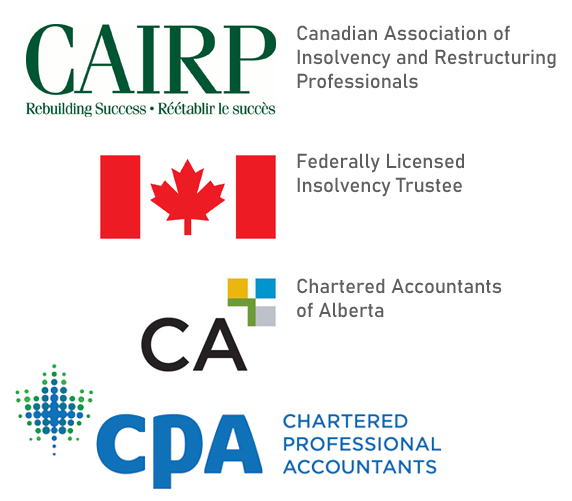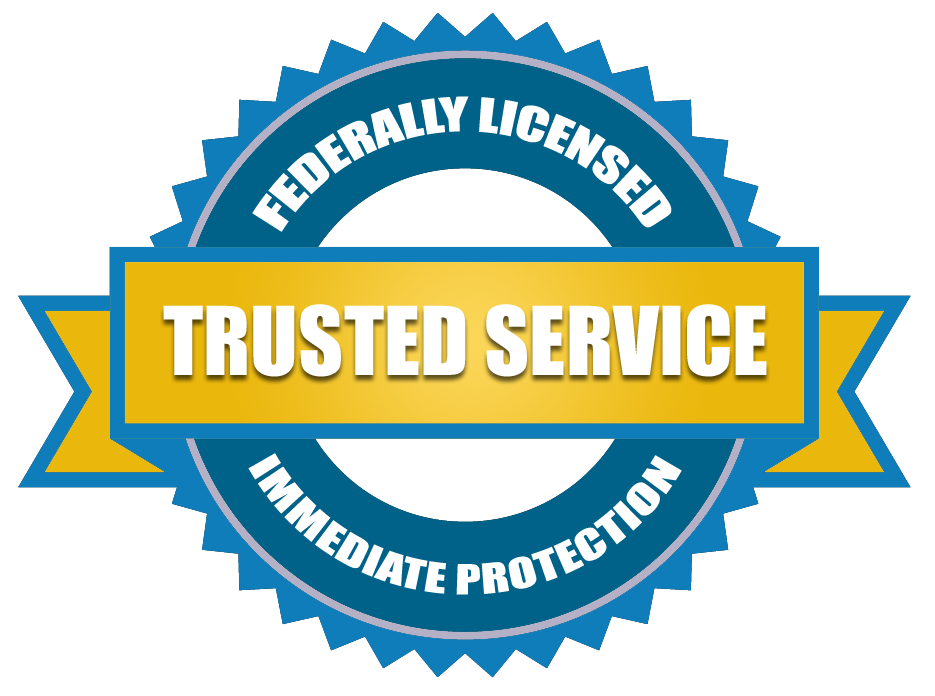A Bankruptcy Helps You Regain Financial Control As Quickly As Possible!
PERSONAL BANKRUPTCY IN CALGARY, ALBERTA
What is a Licensed Insolvency Trustee?
 A Licensed Insolvency Trustee is a federally licensed insolvency expert who is authorized by the Government of Canada to file, administer and oversee bankruptcy and insolvency estates under the provisions of the Canadian Bankruptcy and Insolvency Act.
A Licensed Insolvency Trustee is a federally licensed insolvency expert who is authorized by the Government of Canada to file, administer and oversee bankruptcy and insolvency estates under the provisions of the Canadian Bankruptcy and Insolvency Act.
Unlike many self-proclaimed “debt specialists” advertising on TV, the Internet and elsewhere, who cannot offer you legal protection, Licensed Insolvency Trustees are Officers of the Court. Licensed Insolvency Trustees are the ONLY individuals who can, through a bankruptcy or a formal debt settlement process called a Consumer Proposal, compromise your creditors rights and provide you with immediate legal protection from your creditors, and permanent relief from your debts. All other parties require the cooperation of your creditors and as you might guess their full cooperation is almost never achievable.
What does a Personal Bankruptcy Involve?
Personal Bankruptcy is a legal process whereby you surrender a portion of you assets and, depending on what you make, share a portion of your income while bankrupt, in return for protection from your creditors and forgiveness of your debts.
The four most common questions we receive about Bankruptcy are:
- What will I Lose if I go Bankrupt?
- How Much does a Bankruptcy Cost?
- What Happens to my Debts if I go Bankrupt?
- How Long will I be Bankrupt?
What will I Lose if I go Bankrupt?
The Bankruptcy and Insolvency Act allows each province to set their own exemption limits and what their residents can keep if they file personal bankruptcy.
What you get to keep and what you lose depends on what you have and where you live. Alberta has some of the best exemption limits in the country and the assets you get to keep are set forth as follows:
- Necessary clothing and personal effects to a liquidation value of $4,000;
- Household furnishings and appliances to a liquidation value of $4,000;
- Tools of trade or property used by the debtor to earn his or her principle source of income to a maximum value of $10,000;
- One car or a truck to a maximum value or equity* of $5,000;
- $40,000 equity* in your principal residence or, if you have joint ownership, your proportionate share thereof;
- Medical and Dental Aids;
- Certain Life Insurance policies;
- Certain pensions, as well as RESP’s and RRSP’s;
- Other special exemptions for farmers.
* Equity is the value of the asset less any amounts you owe against it.
How Much does a Bankruptcy Cost?
There are three components to consider when determining the total cost of a personal bankruptcy:
1) The Basic Fee
2) Income Sharing while Bankrupt
3) Assets you will Lose
As you can see, the real cost of a Bankruptcy is not the Basic Fee you have to pay to your Trustee, but rather the non-exempt assets you may lose and the amount of income you will have to share while bankrupt.
If you have NO appreciable assets, and MODEST income, the cost of a bankruptcy in the case of a first-time bankrupt approximates $1,800.00. If, for example however, you own a non-exempt asset, such as a ski-doo and a quad, boat, etc., etc., you must surrender those assets for sale and distribution of the proceeds to your creditors. If, in this scenario, you own a ski-doo which is worth $5,000.00, the cost of your bankruptcy, before any income sharing, would be $6,800.00 ($1800 [or the basic fee] plus $5000 [the value of the ski-doo])
As you can see, when you take into account all three factors, the cost of one’s bankruptcy can vary significantly from individual to individual. Notwithstanding that the effective cost of a bankruptcy can be higher for some, we have never seen a case where a bankruptcy did not save a client a significant amount of money. People who earn more, and have to pay more in a bankruptcy, usually owe significantly more than someone who does not make significant income.
What Happens to my Debts if I go Bankrupt?
In most cases, a bankruptcy eliminates most, if not all of a person’s debts. There are a few exceptions to the rule, which include the following:
- Secured Debts
In most cases, a bankruptcy does not prevent a secured creditor such as a Bank, Credit Union or Financial Company from realizing on any asset which you have pledged as security for your loan, and where the payments on those loans are not being made.
If you want to keep a secured asset, the payments must be made. If you don’t care about the asset, and are willing to surrender it, or don’t want to keep it, any amounts you owe in relation to that asset can be written off in your bankruptcy. The creditor’s only recourse is against the asset itself, not you.
- Legislative Exceptions
Certain types of debts are considered debts which, from a public policy perspective, are not eligible for discharge by your bankruptcy and they include the following:
- Fraud, Embezzlement, Theft
- Debts by Misrepresentation
- Fines, Penalties imposed by Court
- Damage / Restitution Orders
- Alimony or Maintenance Obligations
- Student Loans
- Dividends on Non-disclosed Debts
You can see from a public policy perspective that the government does not want people to get a discharge for debts arising out of fraudulent or criminal activity, nor do they want people to be able to walk away from family maintenance obligations or go to school, get an education, and write off their educational loans by filing bankruptcy.
Other than these exceptions, there are very few debts that survive a bankruptcy.
How Long will I be Bankrupt?
The length of a person’s bankruptcy and the date of one’s discharge from bankruptcy depends on two principal factors, the first being have you been bankrupt before, and the second is how much do you make.
The timeframes for discharges from bankruptcy, assuming that you complete all your duties, are as follows:
First Time Bankrupt – Minimum period of 9 mths. to a maximum of 21 mths.
Second Time Bankrupt – Minimum period of 24 mths. to a maximum of 36 mths.
Third or Subsequent – Barring any extenuating circumstances, 36 to 48 mths.
How does my Income Affect the Length of my Bankruptcy?
The Bankruptcy and Insolvency Act, Directives and Rules set out federal government income guidelines which set income sharing requirements depending on the size of one’s family. Any income earned by you over and above the federal government income guideline must be shared equally with your creditors for 21 months if you are a 1st time bankrupt or 36 if you a filing a bankruptcy for a second time. For example, if your monthly income exceeds the guideline by $200.00, you are expected to pay ½ of that, or $100.00 into your bankruptcy estate for each month you exceed that guideline. In essence, the more you make, the more you are expected to share with your creditors.
For more information regarding the federal government income guidelines, and how much you would have to pay if you want to go bankrupt, please do not hesitate to contact us, either by giving us a call or by using our “Contact Us” feature located in the upper righthand corner of each page of this website. We will be happy to provide you with a complete outline of the governments income guidelines and how they will affect you or your family.
Call or Contact Us to get More Information
For more information about Bankruptcy or to learn about some alternatives to bankruptcy such as a Consumer Proposal, please do not hesitate to Contact Us and request a Free No-Obligation Consultation. We are friendly, easy to talk to, and we will take the time to review all your options with you.
You Can Count On Us!
Something really exciting happens after people make their first phone call to us!
Send us an Email, Ask us a Question, Have us Call You!
Cameron-Okolita Inc.
Licensed Insolvency Trustees
Consumer Proposal & Bankruptcy Service
Calgary Main Office:
Bankruptcy Inquiry Line:
Mon - Fri: 8:30 am to 5:00 pm
Sat: 10:00 am to 3:00 pm
Friendly and Easy to Talk To:
At Cameron-Okolita, we are friendly, easy to talk to, and we pride ourselves on exceptional service, making our clients’ needs our top priority.
Let us help you get a fresh start and put the stress and worry of your finances behind you.


